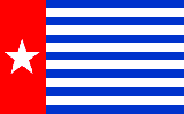This month marks the 30th anniversary of the Lacluta massacre in East Timor by battalions of the Indonesian military, or TNI.
One of the enduring horrors of the occupation of East Timor was the “fence of legs” campaign of 1981 where civilians were rounded up and forcibly marched across the island to flush out resistance fighters – including Xanana Gusmao, now the fledgling nation’s Prime Minister.
Many died along the way. The campaign led to “very serious humanitarian consequences,” including famine as it took place during planting season and many of those press-ganged were subsistence farmers.
The march headed to Lacluta where the UN Commission for Reception, Truth and Reconciliation determined hundreds of East Timorese were murdered by Indonesian armed forces. “The commission received evidence of a large massacre of civilians, including women and children, at this time,” it said.
Indonesian authorities admitted to only 70 deaths, while Martinho da Costa Lopes of East Timor’s Catholic church said the death toll was closer to 500. One East Timorese fighter said the attack was carried out by Battalion 744, later to be commanded by Indonesia’s current president, Susilo Bambang Yudhoyono.
“I witnessed with my own eyes how the Indonesian military, Battalion 744, killed civilians in front of me,” Albino da Costa said. “They captured those unarmed people, tied them up then stabbed them to death. There was a pregnant woman captured and killed just like that. I saw it from a close distance, just 100m from where it happened.”
Costa Lopes died in Lisbon in 1991. His repeated calls for intervention by the United Nations and for curtailment of United States military aid to the Indonesian Government went unheeded.
The US, Japan and a number of Western European countries continued to provide Indonesia with about $5 billion in military aid. In the aftermath of the 1975 invasion the media largely ignored, as one Australian parliamentary report called it, “indiscriminate killing on a scale unprecedented in post-World War II history,” because of Indonesia’s vast natural resources. It was, as former US President Richard Nixon put it, the “greatest prize in the Southeast Asian area”.
Indonesia’s occupation of East Timor ended with independence and perhaps as many as a third of the population killed.
But today there is another war for independence in Indonesia: West Papua. And the parallels with East Timor are striking.
Papuans have endured horrific violence since Indonesia first invaded in 1963. Amnesty International and other human rights groups agree that as many as 100,000 Papuans have been killed under occupation.
West Papua is rich in minerals and oil. Transmigration, commercial logging, mining and other government-sponsored programs are considered to be in the interests of the nation, and take priority over any local land claims.
It has the world’s largest gold mine, controlled by the Freeport-McMoRan Company of Louisiana and the Anglo-Australian company Rio Tinto. General Suharto granted the concession under the 1967 foreign investment laws that opened Indonesia to near-unrestricted foreign wealth exploitation.
When guerrillas from the Free West Papua Movement sabotaged the mine in 1977, the army responded by killing at least 800 Papuans. This was not the first, not the last time the Indonesian military would be used to protect Western capital under the guise of “protecting the unity of the nation”. It is happening still.
Grasberg workers walked out on strike over pay and conditions on Wednesday. The mineworkers are paid between $1.50 and $3.50 per hour, less than a tenth of what their colleagues in other countries get, while between April and June 2011 Freeport made a profit of $1.73 billion. Most of the wealth extracted from the mine goes abroad – a tiny percentage benefits Papuans. Two thirds of West Papua’s forests – which are at the heart of Papuans’ traditional way of life – are designated for “production” by Jakarta.
An Indonesian military intelligence report leaked to the press in August showed how the island is awash with spies. And how badly equipped are the Papuan separatists to fight the Indonesian military. The TNI is armed and trained by the US and its allies as part of the East Asia Summit grouping, which is fast developing into a Nato for Asia.
Ahead of the planned Third Papuan Peoples Conference, Indonesian paramilitary forces linked to the police and Special Forces of the army appear to have stepped up military operations in the province, which have been described as a campaign of terror by people on the ground. According to KontraS, The Commission for the Disappeared, the army’s actions are illegal under Indonesian law.
Just like in East Timor before independence, West Papua is a prime example of a colony where the extraction of wealth for the benefit of a few outweighs a people’s fundamental right to self-determination. If atrocities such as the one at Lacluta are to be prevented in the future in West Papua, the TNI should withdraw and international investigators should be allowed access to the region.
Jakarta is at a crossroads with international attention focused on West Papua following the Pacific Islands Forum meetings in New Zealand. The head of the UN Ban Ki Moon was unequivocal when asked about Papua. Papuans’ rights should be upheld, he said. Indonesia’s government could take this opportunity to fulfill its pledge to grant Papuans autonomy. But this must include an end to the lawlessness of government-sponsored armed groups, a withdrawal of army units, and determining how Papuans’ natural resources are used must be the preserve of Papuans.
